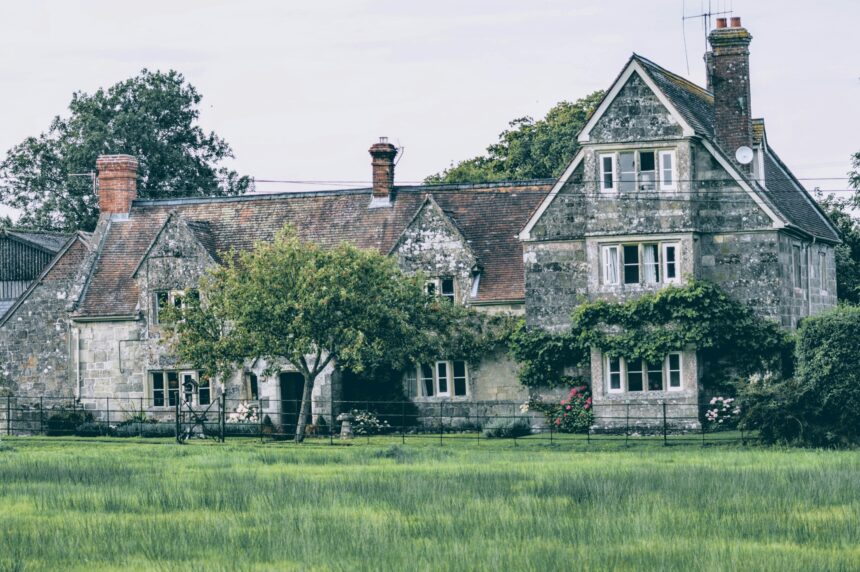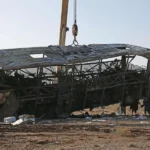Renovating an ancient home can be a thrilling journey to preserve charm while adding modern comforts. However, it’s crucial to prioritize safety before swinging the first hammer. Many older homes contain hidden asbestos, a dangerous material that can pose significant health risks if disturbed.
- What is Asbestos, and Why is it Scary?
- How Asbestos is Commonly Found in Old Homes
- Why an Asbestos Survey is Essential Before Renovation
- The Types of Asbestos Surveys
- Steps Involved in Conducting an Asbestos Survey
- What to Do if Asbestos is Found
- Potential Consequences of Skipping an Asbestos Survey
- Prioritize Safety with an Asbestos Survey
In this article, we will discuss why an asbestos survey helps you effectively identify and manage these risks, protecting your family and contractors.
What is Asbestos, and Why is it Scary?
Asbestos is a naturally occurring mineral that was once widely used in buildings for its durability and heat resistance. Professional asbestos contractors play a vital role in determining and handling asbestos risks. Its fibers are hazardous when inhaled, leading to extreme health problems like lung cancer, asbestosis, and mesothelioma.
Asbestos experts are trained to safely inspect, test, and remove asbestos-containing materials, minimizing exposure to this toxic substance. Asbestos Professionals LLC suggests that whether renovating, demolishing, or addressing environmental hazards, hiring licensed asbestos contractors ensures compliance with safety regulations and also provides protection.
Understanding asbestos dangers underscores the importance of professional intervention in managing its risks.
Are there immediate symptoms if I am exposed to asbestos?
No, asbestos exposure usually doesn’t cause immediate signs. Ailments like asbestosis, lung cancer, or mesothelioma develop years or decades after prolonged exposure. If you doubt exposure, consult a healthcare provider to assess potential risks and watch your respiratory health.
How Asbestos is Commonly Found in Old Homes
Asbestos is generally found in old homes built before the 1980s due to its widespread use in construction materials. Common areas include insulation, ceiling tiles, floor tiles, roofing shingles, and siding.
A survey conducted by Asbestos.com found that 25% of Americans are unaware of the presence of asbestos in their homes. Around 90% of people are aware of the cancer risk of asbestos, but only 60% know about other facts of asbestos. Identifying asbestos in hidden areas requires a professional inspection.
It’s also present in adhesives, textured paints, and HVAC ducting systems. Over time, these materials can contaminate, releasing toxic asbestos fibers into the air when disturbed during renovation. Homeowners should always consult certified asbestos contractors to assess potential hazards and ensure safe removal to protect their health and property.
Can modern home additions include asbestos if they were constructed over old structures?
Modern home additions typically do not contain asbestos due to strict regulations banning its use in most materials. However, if built over old structures, there’s a risk of disturbing pre-existing asbestos in original components like insulation or flooring.
Why an Asbestos Survey is Essential Before Renovation
According to Statista, the approximate asbestos consumption in the US was estimated at 150 metric tons in 2023. There was a considerable decrease from the previous year when 290 metric tons were used. The consumption of asbestos has been decreasing since its ban; still, it poses considerable health risks due to its historic presence.
An asbestos survey is essential before any renovation to safeguard health and comply with legal requirements. Older homes often contain asbestos in insulation, flooring, or roof tiles, which can discharge dangerous fibers when disturbed. Without a survey, hidden asbestos poses serious risks to both workers and occupants, potentially leading to life-threatening diseases.
A professional asbestos survey identifies and assesses hazardous materials, ensuring proper management or removal before renovations begin. It also prevents costly delays, fines, and unsafe exposure. By prioritizing an asbestos survey, homeowners can protect their families, contractors, and investments while creating a safe and healthy living environment.
The Types of Asbestos Surveys
The Health and Safety Authority has reported that there are two major classes of asbestos surveys: the management asbestos survey and refurbishment/demolition asbestos survey.
The management survey is designed for a regular occupation to identify asbestos-containing materials (ACMs) that could be aggravated during routine maintenance. The refurbishment or demolition survey is more intrusive and focuses on areas undergoing renovation to locate hidden ACMs.
These surveys are the most thorough and are required before tearing down a structure to ensure no asbestos remains. Each type of survey is conducted by licensed asbestos contractors who assess and document risks, enabling safe handling or removal. Choosing the right survey depends on the scope of construction and the property’s state.
Steps Involved in Conducting an Asbestos Survey
Conducting an asbestos survey involves several critical steps to ensure safety and compliance. First, licensed asbestos contractors perform a visual inspection to identify probable asbestos-containing materials (ACMs). They collect samples from suspected areas like insulation, flooring, or ceiling tiles for laboratory analysis. Once results confirm the presence of asbestos, contractors assess the condition and risk of disturbance.
Detailed findings are compiled into a report outlining locations, types, and recommendations for managing or removing ACMs. This process ensures proper precautions are in place during renovations or demolitions. Engaging certified professionals is essential to minimize health risks and ensure regulatory adherence.
What credentials should I look for in an asbestos contractor?
Look for asbestos contractors with proper licensing, certifications, and experience in asbestos inspection and removal. Verify they comply with local regulations and have specialized training in handling unstable materials. Additionally, check for references, insurance coverage, and adherence to safety protocols to ensure reliable and safe asbestos management.
What to Do if Asbestos is Found
If asbestos is found, avoid disturbing the area to prevent fibers from becoming airborne. Consult licensed asbestos contractors for professional advice and management. They will assess the material’s condition to determine if disposal or containment is necessary. In some cases, sealing or encapsulating the asbestos may suffice to minimize risk.
For damaged or high-risk materials, proper removal and disposal are crucial, as well as following strict safety protocols. Always ensure compliance with local regulations during this process. Inform everyone in the vicinity about the hazard and restrict permits to affected locations until the issue is resolved. Prioritizing professional intervention ensures health and safety.
Potential Consequences of Skipping an Asbestos Survey
Skipping an asbestos survey can lead to serious health and legal consequences. Agitating asbestos-containing materials during renovations or repairs can discharge harmful fibers into the air. This ultimately increases the risk of respiratory diseases like asbestosis, lung cancer, and mesothelioma.
As per the Mesothelioma Hope, around 2,500 to 3,000 new mesothelioma patients are diagnosed in the US every year. It is diagnosed in patients only after stage 3, due to which it becomes impossible to treat. Only 40% of patients have a life expectancy of more than 1 year after diagnosis.
Without a survey, homeowners and contractors may unknowingly expose themselves to these hazards. Additionally, failure to conduct a proper survey can result in costly fines, legal liabilities, and delays in construction projects. In some cases, a policy may not cover injuries or health-related issues caused by asbestos exposure. Prioritizing an asbestos survey ensures the safety of everybody involved and helps maintain regulatory compliance.
Prioritize Safety with an Asbestos Survey
Renovating an old home without an asbestos survey is risky. Asbestos exposure can have unbearable health impacts and lead to costly legal and financial troubles. By investing in a professional survey, you ensure the safety of everyone involved,comply with regulations, and make your renovation project safe and successful.















